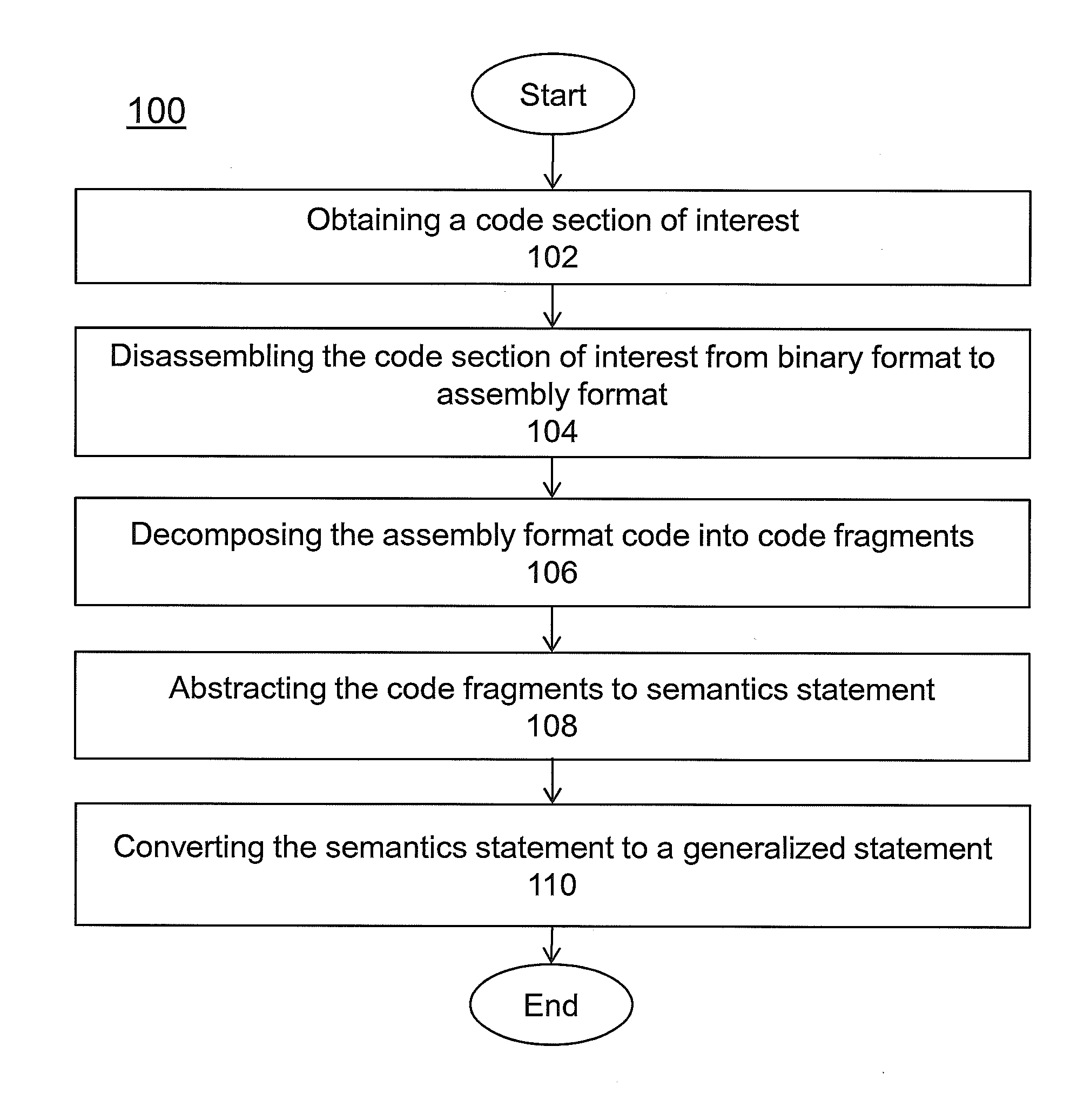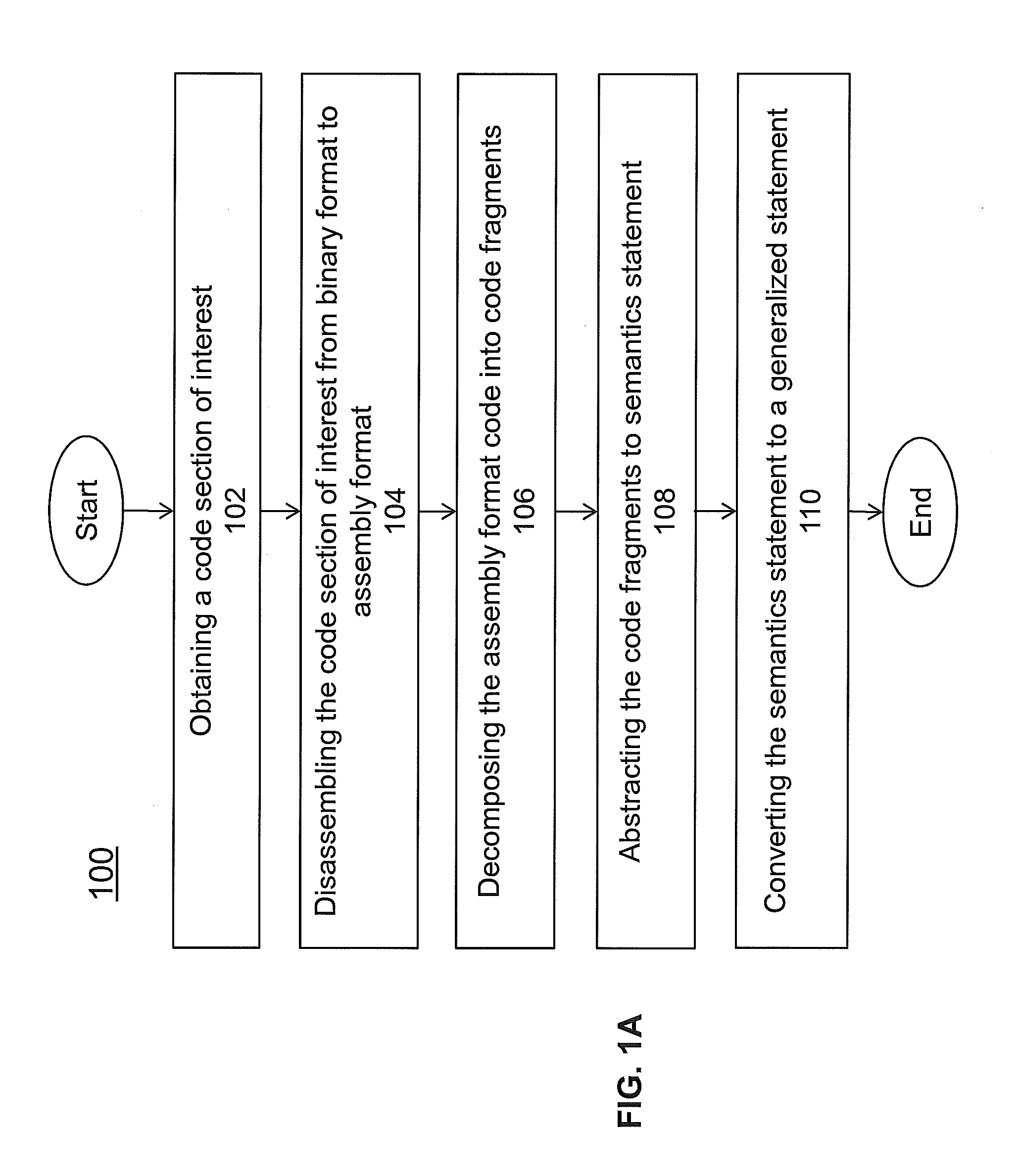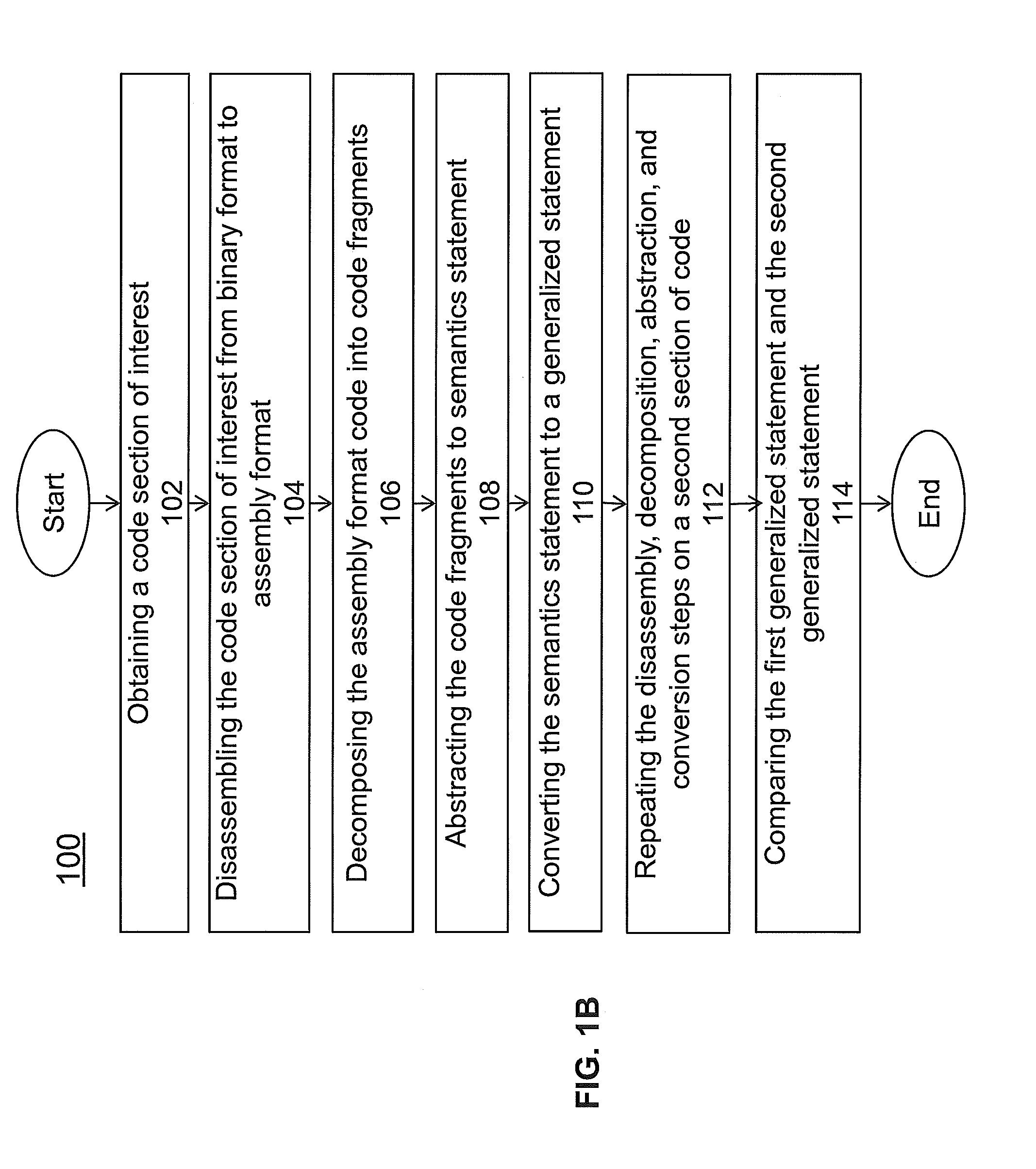System and method for identifying and comparing code by semantic abstractions
a semantic abstraction and system technology, applied in the field of system and method for identifying and comparing code by semantic abstraction, can solve the problems of inability to mathematically develop a method, limited value of search for identical matches of code, and disadvantages of known approaches to analyze computer code, etc., to achieve efficient analysis of computer code
- Summary
- Abstract
- Description
- Claims
- Application Information
AI Technical Summary
Benefits of technology
Problems solved by technology
Method used
Image
Examples
Embodiment Construction
[0050]Certain embodiments of the system and methods of the present invention may include converting certain computer code into its denotational semantics that is more easily analyzed relative to the binary format of the code.
[0051]More specifically, as illustrated in FIG. 1A, certain method embodiments 100 of the present invention include obtaining a code section of interest 102. Then, the code section of interest is disassembled 104. Disassembly typically consists of converting the computer code from binary format into an assembly format.
[0052]The disassembled code, in assembly format, is decomposed 106. The decomposition step includes breaking the disassembled code into code fragments, where each fragment corresponds to a block of code.
[0053]In certain embodiments, the decomposed code may be illustrated as a control flow graph of the code fragment. A control flow graph may be a flow chart mapping the order of actions identified in the code, in which each node in the graph represen...
PUM
 Login to View More
Login to View More Abstract
Description
Claims
Application Information
 Login to View More
Login to View More - R&D
- Intellectual Property
- Life Sciences
- Materials
- Tech Scout
- Unparalleled Data Quality
- Higher Quality Content
- 60% Fewer Hallucinations
Browse by: Latest US Patents, China's latest patents, Technical Efficacy Thesaurus, Application Domain, Technology Topic, Popular Technical Reports.
© 2025 PatSnap. All rights reserved.Legal|Privacy policy|Modern Slavery Act Transparency Statement|Sitemap|About US| Contact US: help@patsnap.com



